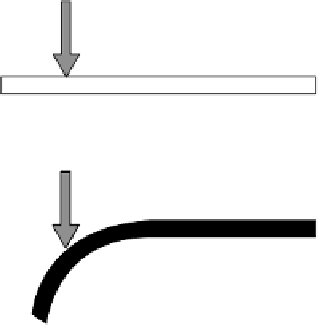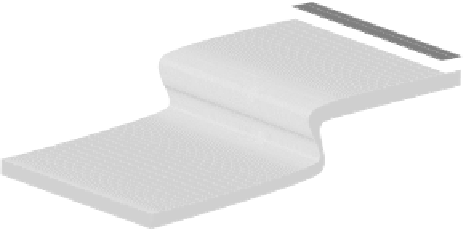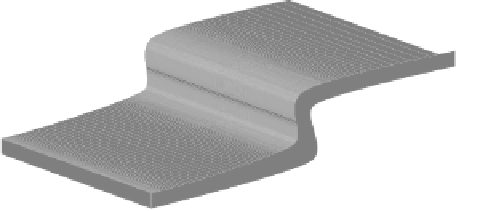Geoscience Reference
In-Depth Information
Bending
Fig. 4.122
Bending of a layer is formed when pairs of forces or torques equal in magnitude and opposed are applied normal or at high angles
to points of the layer, producing the rotation that causes the bend of wave instability. Typical examples include the formation of ductile defor-
mations by folding of a sediment cover over a faulted rigid basement, as a result of block displacements.
4.17
Seismic waves
In addition to molecular-scale motions characteristic of
different thermal states, Earth materials are in constant
3D motion, termed background
seismic “noise.”
This is
usually of a few seconds period and of such tiny amplitude
(order of 10
5
mm) that we are usually completely
unaware of its existence. Nowadays in addition to natural
causes (like thermal stresses, tides, breaking waves, and
winds), many familiar human-induced ground vibrations
contribute to seismic noise, like the passage of vehicles.
Such seismic noise triggers periodic instabilities in moving
and still fluids, preventing, for example, the accurate
modern-day determination of the transition to turbulence
in Reynolds' old laboratories adjacent to Manchester's
busy Oxford Road. Yet periodic ground motions of the
most violent kind are more familiar to many who live
within areas prone to earthquakes (Fig. 4.127). These
ground motions are due to the direct deformation of the
rocks surrounding a fault that has broken surface or which
is located close to the surface. At the surface around the
epicentral
region of an earthquake, the direct ground
motions that originate close to the deep source, the
focus
or
hypocenter
, cause seismic waves to be generated with
periods of 0.5-20 s. These are only revealed by sensitive
instruments called
seismographs
(Fig. 4.128) that are
designed to transmit, amplify, and record the passing
wave motions sufficiently so that they can be analyzed
(although Theseus was reputed to possess the ability to
sense incoming seismic waves).
In general the periodic higher frequency components of
Earth's seismic motion are due to processes of rock
rupture; testament to the ability of tectonic forces at work
in outer Earth being able to strain rocks beyond their
























































Search WWH ::

Custom Search